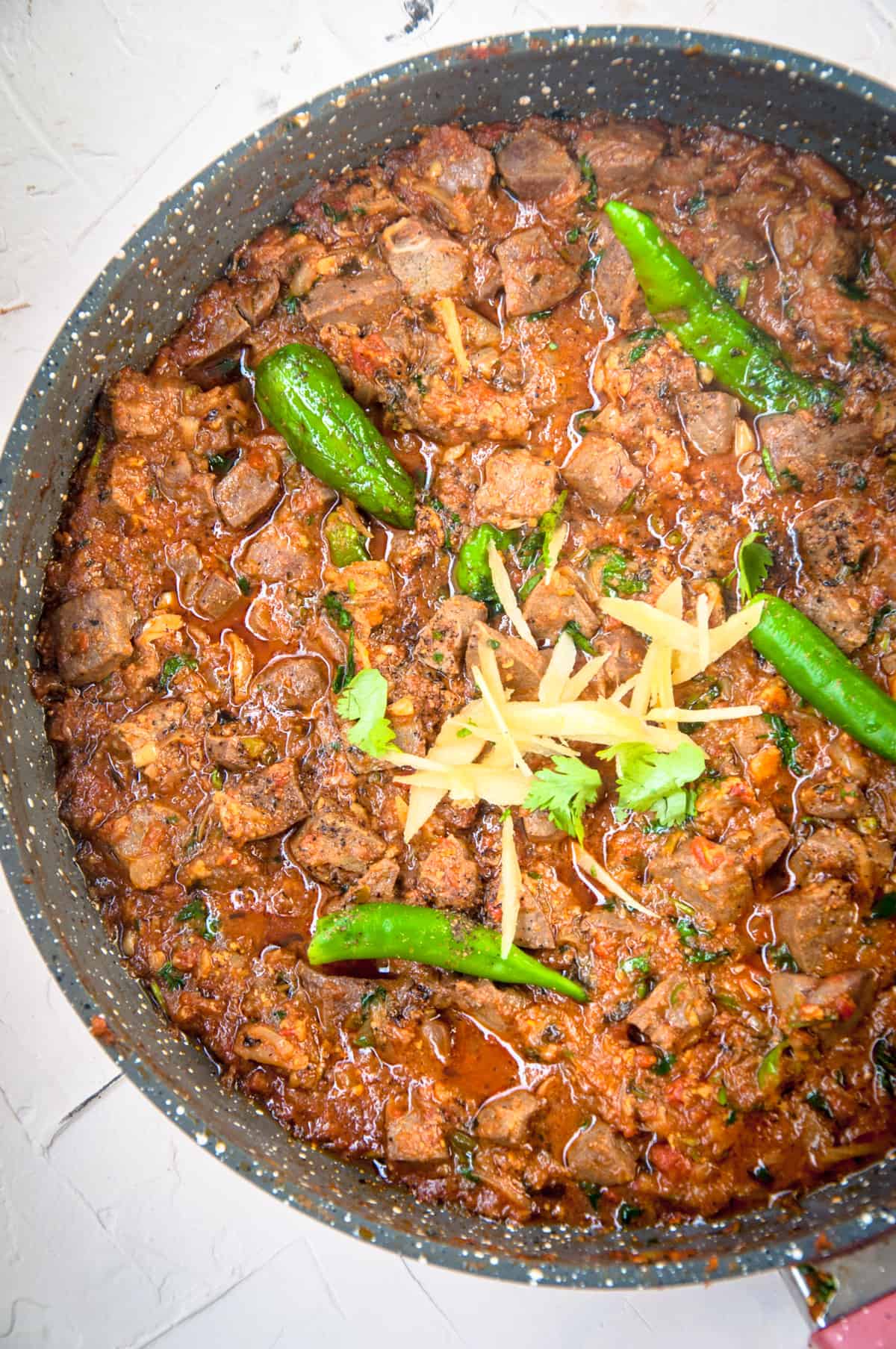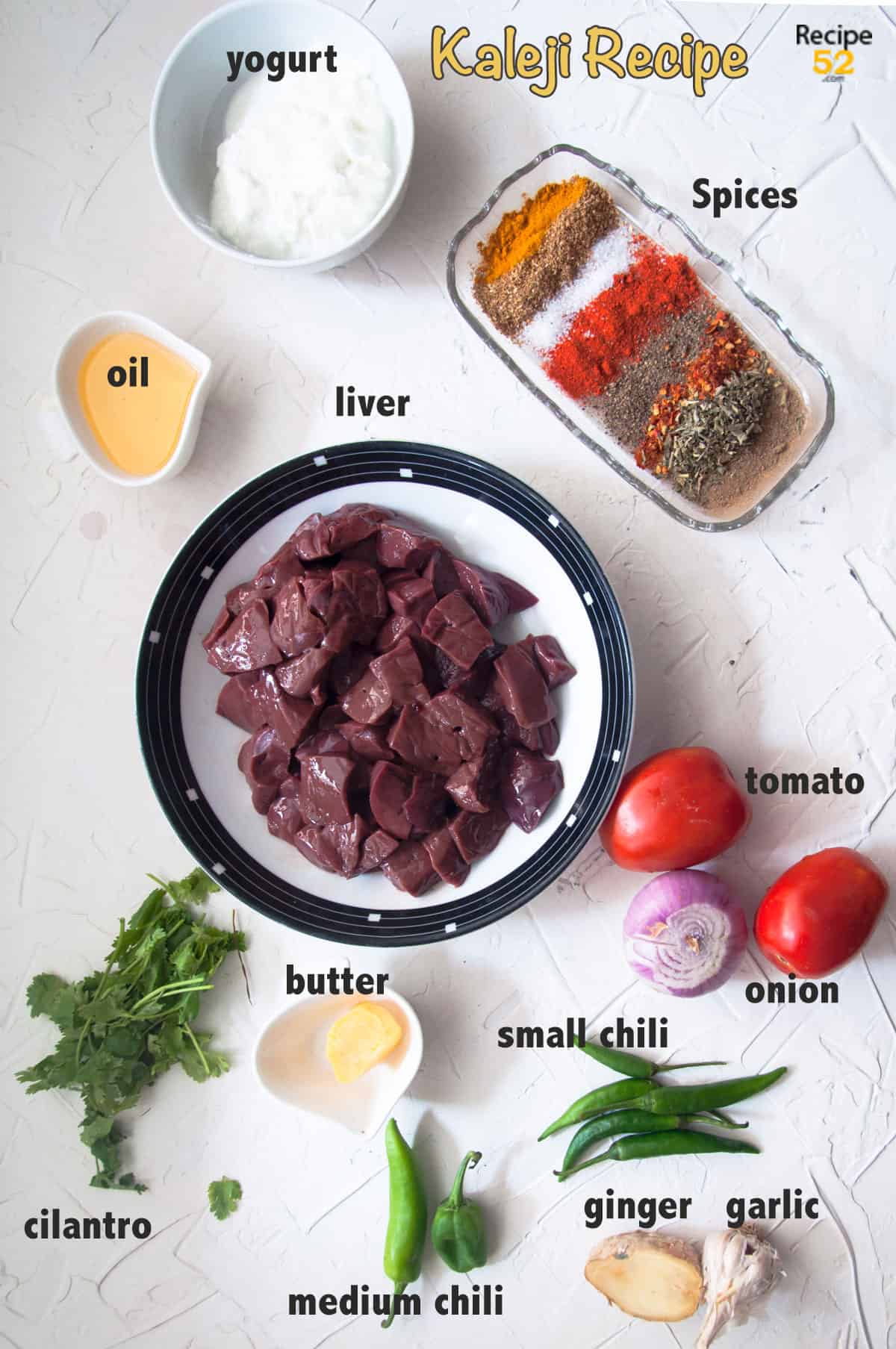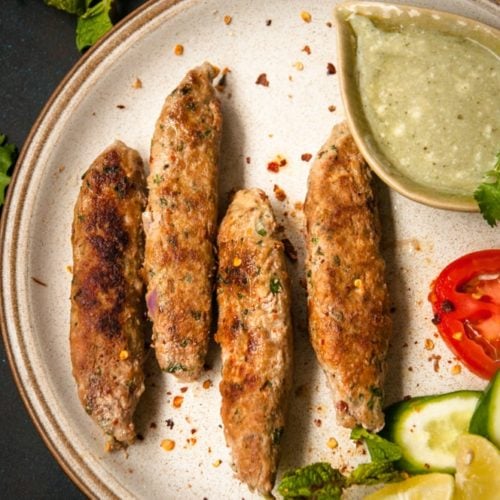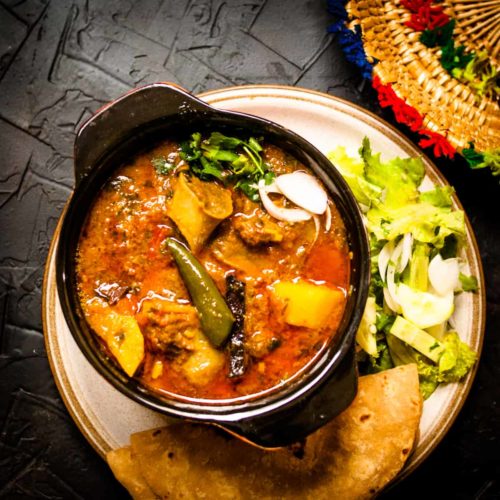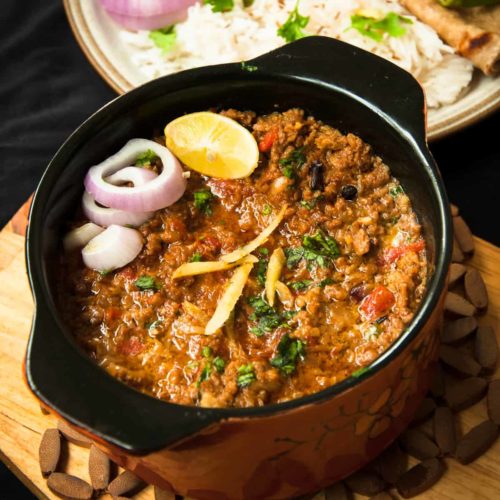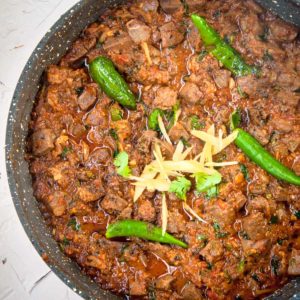Kaleji literally means liver of any animal usually, beef, lamb, or chicken. Kaleji fry or kaleji masala means to fry bite-size pieces of the beef or lamb liver with spices like chili, coriander, cumin, turmeric, garam masala, dried fenugreek, and ginger garlic paste. Usually, tomatoes, onions, and yogurt are also added to make masala gravy. It is served with naan or roti, rice, or even yellow lentil khidchdi. Kaleji Masala or liver fry is a must Eid ul Adha recipe like aloo ghost, seekh kebab, lamb karahi and Nihari. So, follow the cooking timings and steps religiously for best tasting juicy lamb or beef liver curry. Obviously, you can play around with spices, but this recipe is really balanced with aroma spices and gravy, so you better follow it. You may learn more about the benefits of eating liver here.
How Does This Recipe Work?
The basic trick in making bhuni kaleji is cooking time and technique. So follow the steps closely.Resting kaleji after cooking is magic: After cooking lamb liver for 4-5 minutes. Cover pot and rest it. The steam in the pot cooks the liver completely as the liver has very little cooking time. This resting allows the liver to seal some juices inside which keeps your liver fry soft.The resting process will make the liver release juices in gravy that we’ll burn on high heat. I do it when reheating the liver fry before serving. This works best.If you wish to make kaleji pota then you can sub some kaleji with pota in the recipe. Add kidney pieces earlier in the tomato gravy. Let it cook thoroughly then add liver pieces.Here’s a completely separate post where I discussed everything you need to know about cooking liver and how to handle mishaps.
Ingredients
If you try this kaleji recipe, I’d LOVE to hear your feedback in the comments. Your 5-ratings motivate me to do my best. Stay connected for more recipes and videos on Facebook, Instagram, Pinterest, and Youtube.
Kaleji: The liver is the main ingredient in the recipe, hence you must know a little about choosing liver. Always choose a darker, gleaming liver that is fresh and not frozen. It should have a fresh and not very stale smell. The liver of a calf is better than the liver of a cow.Salt: Salt can extract a lot of juice from the liver so try to end most of the salt towards the end of the recipe.Fenugreek: Fenugreek adds both a lover of Indian curry taste and aroma to the liver curry. But more than that it helps the digestion of the liver which can be difficult to digest for senior citizens.Spices: These are basic Indian spices but if do not like any single spice just skip it. You may switch Kashmiri chili and chili flakes with chilies.Green Chilies: Smaller green chilies like Thai chili are spicier and I used them to make green chili paste. The medium and thick chilies are more aromatic and less spicy making them a good choice for garnish.
You can serve kaleji masala with pao, naan or any bread. We love to eat Kaleji masala with yellow dal khidchri or plain rice. You can even make kaleji masala bun with chutney and onions. Kaleji buns are a very popular street food as well.
📖 Recipe


